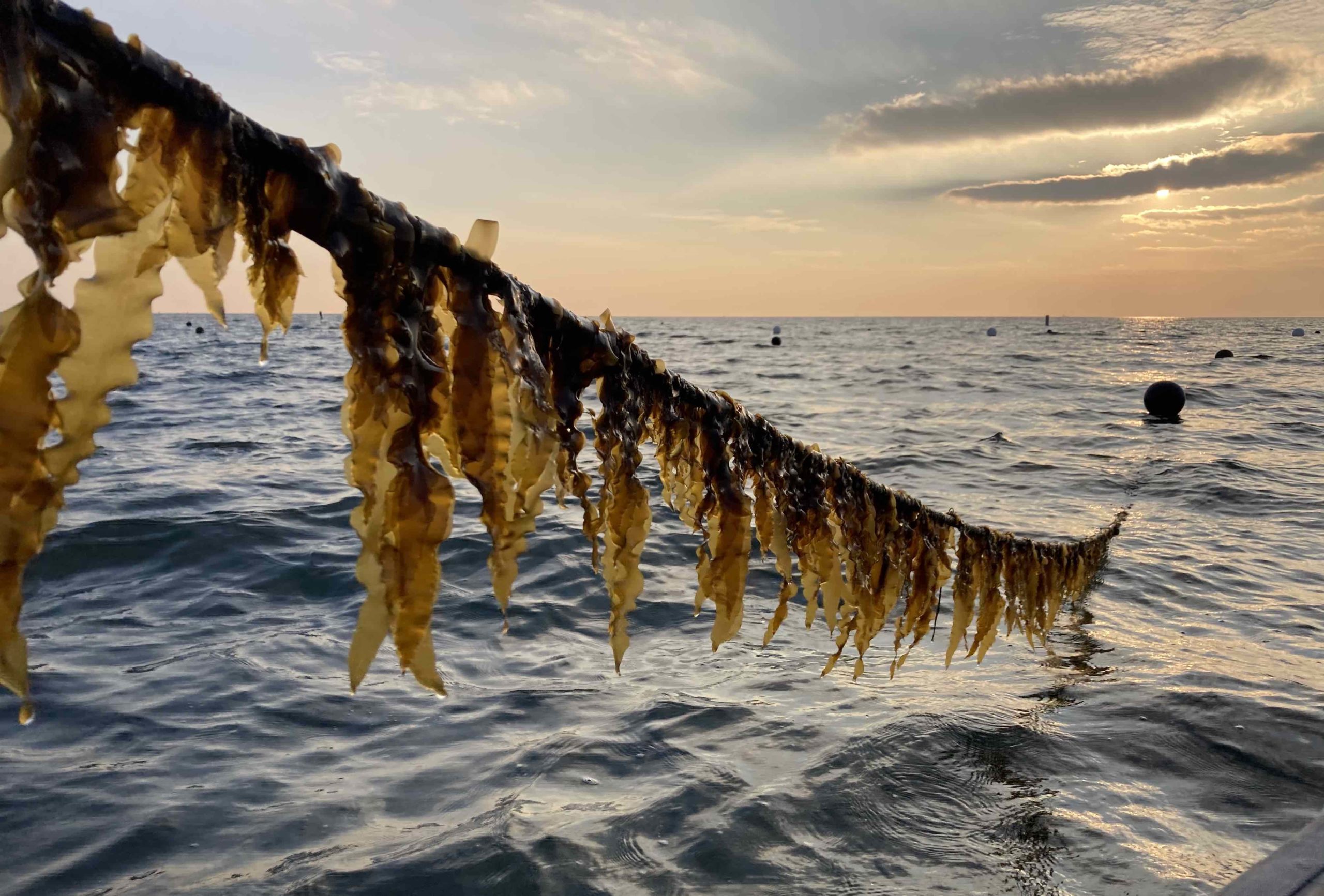In 2021, TreadRight invested in GreenWave as part of point 3 of The Travel Corporation’s Climate Action Plan: to invest in new technologies and nature-based solutions to remove excess carbon from our atmosphere. GreenWave is a regenerative ocean farming organization studying how kelp can be added to soil to increase its carbon storage potential while decreasing harmful nitrous oxide (N2O) emissions from regenerative land farms.
While there have been many attempts to increase soil’s ability to store carbon, (known as soil organic carbon,) one unintended effect is the release of nitrous oxide, (N2O,) a greenhouse gas that is 300 times more potent than carbon dioxide. The largest contributor of the steadily increasing N2O into our atmosphere is agriculture. Nitrous oxide is a by-product from the use of nitrogen, largely used in farming as a fertilizer. The use of kelp as a soil additive is emerging as a tool to reduce nitrous oxide emissions and create a net climate benefit.
By its very nature, GreenWave is tackling more than just carbon removal and demonstrating the many benefits to nature-based carbon solutions. In honor of World Food Day 2021, we spoke with GreenWave about the systems of sustainable food production the project creates, who they benefit, and how we can all support sustainable farming on a day-to-day basis.
What does sustainable food production mean to GreenWave?
We have to think beyond relying on mother nature and focus on how farmers can grow crops that actively breathe life back into our ecosystems, so we can all make a living on a living planet. We must protect ecosystems because there are no jobs and no food on a dead planet. For GreenWave, sustainable food production means growing what is regenerative – not simply what consumers demand, collaborating and building circular economies and business models, and investing in the regenerative economy so small- and medium-sized farms and businesses can succeed.
How does your organization contribute to or enhance sustainable food production?
GreenWave’s polyculture farming system (the simultaneous farming of multiple kinds of crops) grows a mix of seaweeds and shellfish that require zero inputs — no fresh water, fertilizer, feed, or land — while sequestering carbon and rebuilding marine ecosystems. These crops grow with no input, simply by soaking up nutrients in the ocean, making it the most sustainable form of food production on the planet. Since our farms sit vertically below the surface, they produce high yields within a small footprint.
As a nonprofit, GreenWave’s 10-year goal is to provide training, tools, and support to a baseline of 10,000 regenerative ocean farmers to catalyze the planting of 1 million acres and yield meaningful economic and climate impacts.
How can everyday citizens do their part to support sustainable food production?
Eat and cook more seaweed and bivalves such as clams, mussels, scallops and oysters. Get creative, invent new dishes that center these climate-positive crops. Every meal you cook increases demand for these ingredients and supports regenerative ocean farmers.
Use seaweed and shellfish-based fertilizer in your garden to lessen the impact of your garden. Your plants will love it.
Support GreenWave and other organizations working towards sustainable food systems and resilient coastal communities.
What are your thoughts on sustainable food production and its role in fighting the climate crisis?
There is tremendous potential to mitigate climate change and feed the planet by moving towards replicable and scalable climate-positive food production models.
The regenerative ocean farming model works to mimic the diversity of ocean reefs by growing a mix of species that act in concert to revive ecosystems. Each crop plays a vital role. For example, it takes just 0.6 kilograms of carbon to grow one kilogram of mussels — that’s an even smaller carbon footprint than lentils! Farming seaweed in less than 0.1% of the world’s oceans could sequester the carbon equivalent of 20 million cars and produce the protein equivalent of 3 trillion cheeseburgers. Leveraging the environmental benefits of seaweed and shellfish, we can turn these farms into a climate solution powerhouse and stack benefits by growing seaweed and shellfish together while growing food for local communities.
How does sustainable food production also support healthy communities?
Because the regenerative ocean farming industry is in its infancy, we have the chance to do this right — to create a future where climate resilience and equity drive decision-making in the new blue-green economy at sea. We can build a food system from the bottom up, ensuring that we focus on polyculture rather than monoculture, that we don’t privatize our seeds, and that under-resourced families can begin farms. As the emerging regenerative ocean farming industry matures, GreenWave’s goal is to ensure that fishermen and Indigenous communities directly affected by climate change benefit from the industry’s growth and have pathways to become leaders in the field.
If there’s one takeaway you want to leave your reader with, what would that be?
There is an alternative route, both for our oceans and for our economy as a whole. We can farm to restore, not deplete, while creating soul-filling jobs for millions of people, breathing life back into our oceans, and exploring the uncharted world of underwater tastes.
